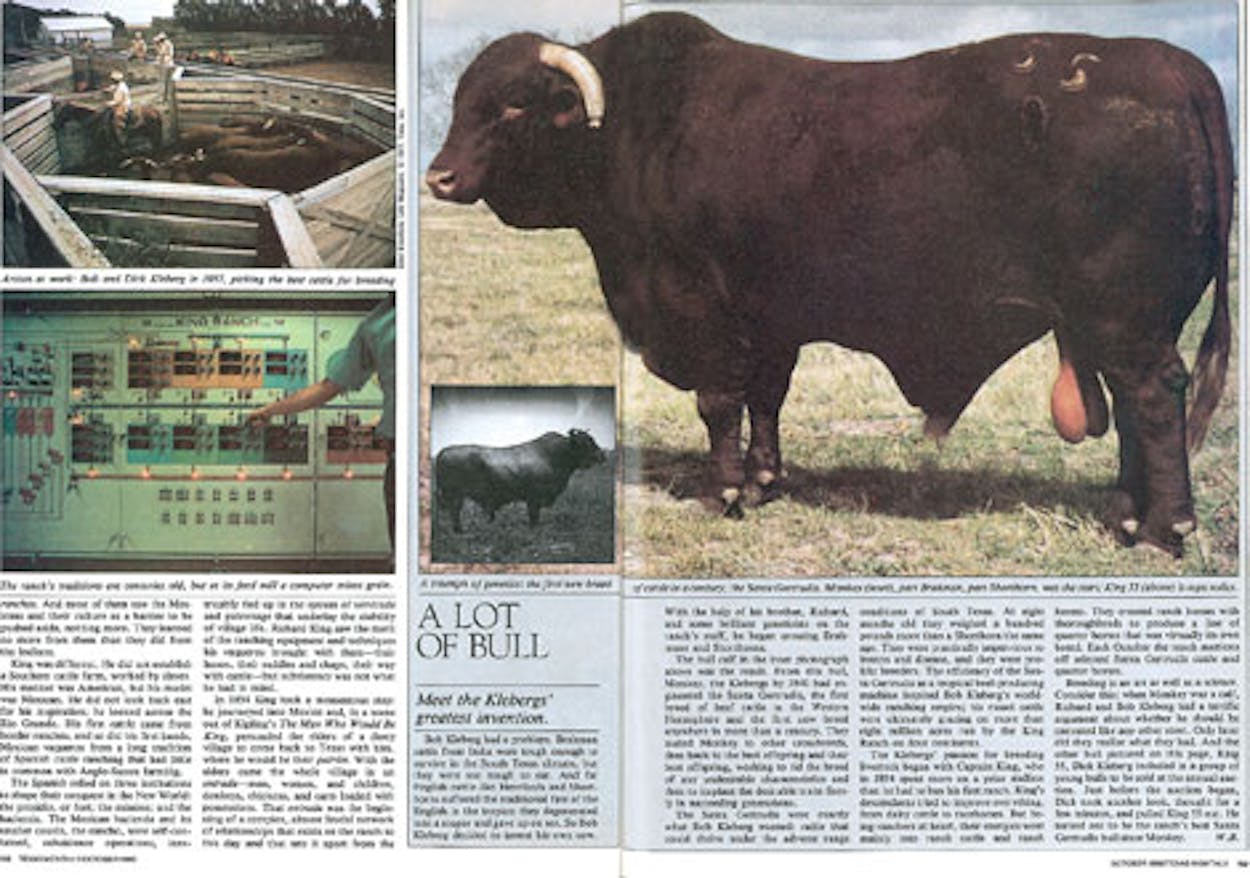Bob Kleberg had a problem. Brahman cattle from India were tough enough to survive in the South Texas climate, but they were too tough to eat. And fat English cattle like Herefords and Shorthorns suffered the traditional fate of the English in the tropics: they degenerated into a stupor and gave up on sex. So Bob Kleberg decided to invent his own cow. With the help of his brother, Richard, and some brilliant geneticists on the ranch’s staff, he began crossing Brahmans and Shorthorns.
The bull calf in the inset photograph above was the result. From this bull, Monkey, the Klebergs by 1940 had engineered the Santa Gertrudis, the first breed of beef cattle in the Western Hemisphere and the first new breed anywhere in more than a century. They mated Monkey to other crossbreeds, then back to the best offspring and their best offspring, working to rid the breed of any undesirable characteristics and then to implant the desirable traits firmly in succeeding generations.
The Santa Gertrudis were exactly what Bob Kleberg wanted: cattle that could thrive under the adverse range conditions of South Texas. At eight months old they weighed a hundred pounds more than a Shorthorn the same age. They were practically impervious to insects and disease, and they were prolific breeders. The efficiency of the Santa Gertrudis as a tropical beef-producing machine inspired Bob Kleberg’s worldwide ranching empire; his russet cattle were ultimately grazing on more than eight million acres run by the King Ranch on four continents.
The Klebergs’ passion for breeding livestock began with Captain King, who in 1854 spent more on a prize stallion than he had to buy his first ranch. King’s descendants tried to improve everything, from dairy cattle to racehorses. But being ranchers at heart, their energies went mainly into ranch cattle and ranch horses. They crossed ranch horses with thoroughbreds to produce a line of quarter horses that was virtually its own breed. Each October the ranch auctions off selected Santa Gertrudis cattle and quarter horses.
Breeding is an art as well as a science. Consider this: when Monkey was a calf, Richard and Bob Kleberg had a terrific argument about whether he should be castrated like any other steer. Only later did they realize what they had. And the other bull pictured on this page, King 55, Dick Kleberg included in a group of young bulls to be sold at the annual auction. Just before the auction began, Dick took another look, thought for a few minutes, and pulled King 55 out. He turned out to be the ranch’s best Santa Gertrudis bull since Monkey.







